Choosing the Right Wood Stain Colors for Your Project: A Guide
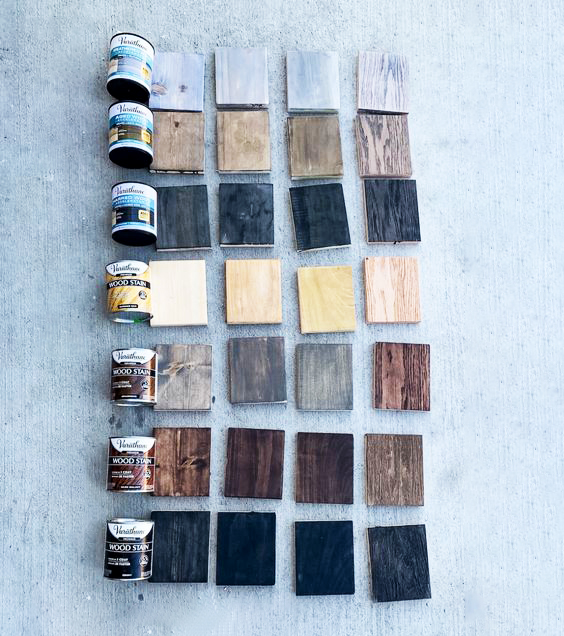
Summary
Choosing the right wood stain colors can be a Herculean effort, but it's an important decision to make to ensure the best results for your project. With so many options available, it's important to consider factors such as the type of wood, the desired look, and the level of maintenance required. In this article, we'll explore the different types of wood stain colors and their characteristics to help you choose the right one for your project.
Intro
When it comes to woodworking projects, choosing the right wood stain colors can make all the difference in the final result. Wood stains come in a variety of colors and finishes, and selecting the right one for your project requires consideration of several factors.
Before you start selecting wood stain colors, consider the following factors:
Wood type: Different types of wood absorb stains differently, which can affect the final color. For example, pine tends to absorb stains more quickly than oak, resulting in a darker color.
Desired look: Consider the look you want to achieve, such as a natural or rustic look, a dark and dramatic look, or a modern and sleek look.
Maintenance level: Some wood stains require more maintenance than others to keep their color and finish looking new, so consider the level of maintenance you're willing to commit to.
In this comprehensive guide we’ll briefly cover few additional topics to help you choose the right wood stain colors for your project
- Types of wood stains available and their benefits and drawbacks
- How to choose the right wood stain color for your project
- Popular wood stain color trends and styles
- Techniques for applying wood stain to achieve different effects
- How to maintain and care for wood surfaces with stain
- Tips for troubleshooting common issues with wood stain
- Using wood stain in DIY projects and furniture restoration
- Environmentally friendly and non-toxic wood stain options
- Enhancing the natural grain and beauty of wood with stain
- Real-world examples of wood stain color combinations and applications.
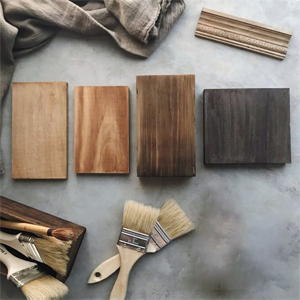
Types of wood stains available and their benefits and drawbacks
Wood stains are a popular choice for adding color and protection to wooden surfaces, but with so many types of stains available, it can be overwhelming to choose the right one for your project. In this article, we'll explore the various types of wood stains and their benefits and drawbacks.
Water-Based Stains: Water-based stains are made with water and colorants, and are often used for interior projects. They dry quickly and emit fewer fumes than oil-based stains, making them a more eco-friendly option. However, they can raise the grain of the wood and may require multiple coats for full coverage.
Oil-Based Stains: Oil-based stains are made with mineral spirits and colorants, and are often used for exterior projects. They penetrate the wood deeply, providing long-lasting protection against the elements. However, they can take a long time to dry and emit strong fumes.
Gel Stains: Gel stains are thick and provide a more controlled application, making them a popular choice for vertical surfaces or detailed work. They are often used for interior projects and come in a range of colors. However, they can be more difficult to apply evenly and may require a topcoat for added protection.
Solid Stains: Solid stains are like paint, but they penetrate the wood like a stain. They provide long-lasting protection against the elements and come in a range of colors. However, they can obscure the wood grain and may require regular maintenance to prevent peeling or cracking.
Semi-Transparent Stains: Semi-transparent stains allow the wood grain to show through while providing a hint of color. They are often used for exterior projects and provide protection against the elements. However, they may require regular maintenance to prevent fading or peeling.
When choosing a wood stain, consider the type of wood you are working with, the level of protection you need, and the desired look and color. Be sure to follow the manufacturer's instructions for application and safety precautions.
There are many types of wood stains available, each with their own benefits and drawbacks. Water-based stains are eco-friendly and quick-drying, while oil-based stains provide long-lasting protection. Gel stains provide a controlled application, solid stains provide long-lasting protection, and semi-transparent stains allow the wood grain to show through. When choosing a wood stain, consider the type of wood, level of protection, and desired look and color.
How to choose the right wood stain color for your project
Choosing the right wood stain color can make all the difference in the look and feel of your project. Whether you're staining a deck, furniture, or cabinetry, selecting the perfect color is important to achieve the desired outcome. Here are some tips on how to choose the right wood stain color for your project.
Consider the Wood Type Different wood types will react differently to stains, so it's important to consider the natural color of the wood before choosing a stain color. For example, oak has a warm, golden hue, while pine has a more yellow tone. Understanding the natural color of the wood will help you choose a stain color that complements and enhances it.
Determine the Look You Want to Achieve Before choosing a stain color, consider the overall look you want to achieve. Do you want a natural look that enhances the wood's natural beauty? Or do you want a more dramatic effect that makes a statement? Lighter stains will give a more natural look, while darker stains will add depth and drama.
Consider the Existing Decor Consider the existing decor of the space where the wood project will be placed. You want the stain color to complement the existing decor, not clash with it. If you have a modern and minimalist decor, you may want to choose a lighter stain color, while a more traditional or rustic decor may be enhanced by a darker stain.
Test the Stain Before committing to a stain color, it's important to test the stain on a small, inconspicuous area of the wood to see how it will look. Apply the stain to a small area and let it dry completely. This will give you a good idea of how the stain will look on the rest of the project.
Consider the Finish Finally, consider the finish you want to achieve. Different types of stains will offer different finishes, such as matte, satin, or gloss. Consider the overall look you want to achieve and choose a stain that offers the desired finish.
Choosing the right wood stain color can be a fun and creative process, but it's important to consider the natural color of the wood, the look you want to achieve, the existing decor, and to test the stain before committing to a color. By following these tips, you can choose the perfect stain color for your project and achieve the desired outcome.
Popular wood stain color trends and styles
Wood stain color trends and styles change just like fashion trends. If you are thinking of staining your wood project, it's essential to choose a color that will complement the design, furniture, or room decor. With so many options available, it can be challenging to decide which color to choose. Here are some popular wood stain color trends and styles to help you narrow down your choices.
Classic Wood Tones Classic wood tones such as cherry, oak, and walnut are still popular today. They add warmth and elegance to any project and are ideal for traditional and rustic settings. These stains are available in various shades, so it's essential to choose a color that complements your furniture or room decor.
Gray Stain Gray stain is becoming more popular due to its modern and contemporary look. Gray stain has a subtle hue and is perfect for modern homes, industrial settings, and Scandinavian designs. Gray stains can be mixed with other colors to create a unique hue or used alone to make a bold statement.
White Stain White stain is perfect for achieving a light and airy feel to any room. It's a popular choice for beach house decor and coastal designs. White stain is also ideal for modern, minimalist, and contemporary homes. It's important to note that white stain requires regular upkeep to maintain its bright appearance.
Dark Stain Dark stains such as ebony and espresso are becoming increasingly popular for modern and contemporary settings. They add drama and elegance to any project and create a striking contrast against lighter furniture or decor. However, it's essential to note that darker stains tend to show scratches and nicks more than lighter stains.
Colored Stains Colored stains such as blue, green, and red are gaining popularity for their unique and bold look. These stains are perfect for creating a statement piece or adding a pop of color to any room. However, it's essential to use colored stains sparingly and complement them with neutral or subtle decor.
Choosing the right wood stain color is crucial to achieve the desired look for your project. Consider the style of your room or furniture and choose a stain that complements it. Whether you prefer classic wood tones, modern gray stains, or unique colored stains, there is a stain that will suit your taste and style.
Techniques for applying wood stain to achieve different effects
When it comes to woodworking projects, applying the right finish can make all the difference. Wood stain is a popular finish that can enhance the natural beauty of wood while also providing protection from moisture and other environmental factors. However, the application of wood stain requires some skill and knowledge to achieve the desired effect.
There are several techniques for applying wood stain, each with its own unique effect. Some of the most popular techniques include:
- Wiping on: This technique involves applying the stain with a clean cloth or brush and then wiping off the excess with another clean cloth. This technique is great for achieving a subtle, even finish.
- Brushing on: Brushing on the stain with a brush is a common technique for applying stain. It allows for a thicker coat and can help to create a more rustic or distressed look.
- Spraying on: Spraying on the stain with a spray gun or aerosol can is a popular technique for achieving an even finish on large surfaces. It can also help to create a more uniform color.
- Layering: Layering involves applying multiple coats of stain to achieve a deeper, richer color. It is a great technique for creating a dramatic effect.
- Distressing: Distressing involves intentionally damaging the surface of the wood to create a weathered, aged look. This technique can be combined with other techniques, such as brushing or layering, to create a unique finish.
Regardless of the technique you choose, there are a few tips to keep in mind when applying wood stain:
- Always start with a clean, dry surface. Any dirt, debris, or moisture on the surface can affect the finish.
- Test the stain on a small, inconspicuous area before applying it to the entire surface. This will help you to determine if the color is right and if the application technique is working as expected.
- Use a high-quality brush, cloth, or spray gun for best results. Cheap or low-quality tools can leave streaks or clumps in the finish.
- Apply the stain evenly and with consistent pressure. This will help to ensure an even color and avoid blotches or streaks.
- Allow the stain to dry completely before applying a topcoat or handling the finished product.
By following these techniques and tips, you can achieve a beautiful and professional-looking finish with wood stain on your next woodworking project.
How to maintain and care for wood surfaces with stain
Wood stain is a popular way to enhance the natural beauty of wood while also protecting it from the elements. However, like any finish, it requires maintenance and care to ensure it continues to look its best. Here are some tips on how to maintain and care for wood surfaces with stain.
Regular Cleaning: One of the most important steps in maintaining a stained wood surface is regular cleaning. Dirt, dust, and grime can build up over time, making the surface look dull and dirty. To clean the surface, use a soft cloth or sponge and a mild soap or cleaner. Be sure to rinse the surface thoroughly with clean water and dry it completely.
Avoid Harsh Cleaners: While it's important to keep the surface clean, you should avoid using harsh cleaners that can damage the stain. Abrasive cleaners, bleach, and ammonia-based cleaners can all strip the stain from the surface of the wood. Stick to mild, non-abrasive cleaners and always test them in an inconspicuous area first.
Touch Up Stains: Over time, the stain on your wood surface may start to fade or wear away. To maintain the color and appearance of the stain, it's a good idea to touch it up every few years. To do this, simply clean the surface and apply a fresh coat of stain according to the manufacturer's instructions.
Protect from Sunlight: Direct sunlight can cause the stain on your wood surface to fade and wear away. To prevent this, consider using curtains or blinds to block out the sun during the brightest parts of the day. If you have outdoor furniture or a deck with a stained surface, consider using an outdoor umbrella or awning to provide shade.
Prevent Water Damage: Water can also damage the stain on your wood surface, causing it to peel or fade. To prevent water damage, be sure to wipe up any spills or standing water as soon as possible. You can also use a water-resistant sealant to protect the surface from moisture.
By following these tips, you can keep your stained wood surfaces looking beautiful for years to come. Remember to clean and maintain the surface regularly, avoid harsh cleaners, touch up the stain when needed, protect from sunlight, and prevent water damage. With a little care, your stained wood surfaces can continue to enhance the beauty of your home or outdoor space.
Tips for Troubleshooting Common Issues with Wood Stain
Wood stain can add beauty and protection to your wood surfaces, but it can also create some common issues that need to be addressed. From blotchy or uneven results to problems with color, these issues can be frustrating, especially if you've put in a lot of time and effort into your project. But don't worry, there are some simple tips and tricks you can use to troubleshoot these issues and achieve the desired results.
Blotchy or Uneven Results
One common issue with wood stain is uneven coloring, often appearing as dark or light spots or blotches. This can be caused by several factors, such as uneven sanding, the wood's natural grain pattern, or inconsistent application of the stain.
To address this issue, start by sanding the surface of the wood with a fine-grit sandpaper to remove any roughness or inconsistencies. Apply a pre-stain wood conditioner, which will help the stain penetrate the wood evenly. Apply the stain in thin, even coats, working with the wood's natural grain pattern, and allow each coat to dry completely before applying the next one.
Inconsistent Color
If you find that the color of your stain is not consistent across the surface of your wood, it could be due to several factors, such as the age or species of the wood, or variations in the way the stain was applied.
To address this issue, consider using a wood conditioner before applying the stain, as mentioned earlier. It's also important to test the stain on a small, inconspicuous area before applying it to the entire surface to ensure you get the desired color. If you are working with a porous wood, such as pine or cedar, you may need to apply additional coats of stain to achieve a consistent color.
Drying and Curing Time
Wood stain requires adequate drying and curing time to set properly. If the stain is still tacky or sticky after a day or two, it may be due to high humidity or inadequate ventilation in the area.
To address this issue, ensure that the area is well-ventilated and has a consistent temperature. Avoid applying too much stain at once, as this can lead to longer drying times. You can also consider using a fan or dehumidifier to speed up the drying process.
Peeling or Flaking
If your wood stain is peeling or flaking off, it may be due to inadequate surface preparation, such as not sanding the wood or not removing old finish properly. It may also be due to low-quality stain or poor application techniques.
To address this issue, start by sanding the surface of the wood to remove any peeling or flaking areas. Ensure that the wood is clean and dry before applying a high-quality wood stain that is designed for the type of wood you are working with. Apply the stain in thin, even coats, and allow it to dry completely before applying additional coats.
In conclusion, wood stain can create a beautiful and protective finish for your wood surfaces, but it can also create some common issues that need to be addressed. By following these tips and tricks, you can troubleshoot these issues and achieve the desired results. Remember to always test the stain on a small, inconspicuous area before applying it to the entire surface and to use high-quality products that are designed for the type of wood you are working with.
Using wood stain in DIY projects and furniture restoration
Wood stain is a versatile and popular product used in a variety of DIY projects and furniture restoration. It enhances the natural beauty of wood while also adding a protective layer to the surface. Whether you're refinishing an old piece of furniture or creating a new project from scratch, wood stain can add a touch of color and character to your work.
Types of Wood Stains There are several types of wood stains available, including oil-based, water-based, and gel stains. Oil-based stains are the most common and provide deep, rich colors that penetrate the wood fibers. Water-based stains are a more eco-friendly option that dry faster and have less odor. Gel stains are thicker and provide more control over the color and application.
Choosing the Right Color Choosing the right wood stain color is crucial to the success of your project. The color you choose should complement the wood's natural grain and the overall design of your piece. Consider the style of your home and the color scheme of the room where the piece will be placed. It's also important to test the stain on a small, inconspicuous area to ensure you're happy with the color before applying it to the entire piece.
Applying Wood Stain There are several techniques for applying wood stain, including brushing, wiping, and spraying. Brushing is the most common method and involves applying the stain in long, even strokes. Wiping involves applying the stain with a rag or sponge and then wiping away the excess. Spraying is a more advanced method that requires specialized equipment.
Maintaining and Caring for Wood Surfaces with Stain Proper maintenance and care are essential for preserving the beauty and longevity of wood surfaces with stain. Regular cleaning with a mild soap and water solution can help remove dirt and grime buildup. Avoid using harsh chemicals or abrasive cleaners, as they can damage the stain and the wood. It's also important to keep wood surfaces out of direct sunlight, as UV rays can fade and damage the stain.
Troubleshooting Common Issues Common issues when working with wood stain include uneven application, blotchiness, and bleeding. Uneven application can be caused by applying too much or too little stain, while blotchiness can occur when the wood absorbs the stain unevenly. Bleeding can occur when the wood contains natural tannins that react with the stain. To avoid these issues, it's important to follow the manufacturer's instructions and test the stain on a small area before applying it to the entire piece.
Wood stain is an excellent choice for DIY projects and furniture restoration. By choosing the right type and color of wood stain and following proper application and maintenance techniques, you can create beautiful and long-lasting pieces that enhance the natural beauty of wood.
Environmentally friendly and non-toxic wood stain optionsEnvironmentally friendly and non-toxic wood stain options
In recent years, there has been a growing concern about the use of harmful chemicals in wood stains and finishes. Fortunately, there are now many environmentally friendly and non-toxic wood stain options available that offer an eco-friendly and healthier alternative to traditional wood stains. In this article, we'll explore some of these options and their benefits.
Water-Based Stains: Water-based stains are an eco-friendly alternative to oil-based stains. They contain fewer VOCs (volatile organic compounds), which makes them safer for the environment and your health. They also dry faster than oil-based stains, which means you can apply multiple coats in a shorter amount of time.
Soy-Based Stains: Soy-based stains are made from soybeans, which are a renewable resource. They contain no harmful VOCs and are safe to use around children and pets. They also provide a rich, deep color that is similar to traditional wood stains.
Natural Stains: Natural stains are made from natural ingredients such as tea, coffee, or walnut husks. These stains are non-toxic and provide a subtle, natural look to your wood. They are also a great option for those who want to achieve an antique or distressed look.
Zero VOC Stains: Zero VOC stains are made from natural ingredients and contain no harmful VOCs. They are safe to use in any indoor or outdoor environment and provide a long-lasting finish that is resistant to fading and peeling.
Milk Paint: Milk paint is a non-toxic paint that can be used as a wood stain. It is made from natural ingredients such as milk protein, lime, and clay. Milk paint provides a rich, matte finish and is a great option for those who want to achieve a rustic or vintage look.
There are many environmentally friendly and non-toxic wood stain options available on the market today. These options provide a safe and healthy alternative to traditional wood stains while still providing a beautiful finish to your wood surfaces. So, the next time you are in the market for a wood stain, consider one of these eco-friendly options for a healthier and more sustainable choice.
Enhancing the natural grain and beauty of wood with stain???????
Wood stain is a popular finish for furniture, flooring, and other wood projects. One of the main reasons for using wood stain is to enhance the natural beauty and grain of the wood. With the right technique, wood stain can bring out the natural characteristics of the wood, adding depth and richness to the color and texture. Here are some tips for enhancing the natural grain and beauty of wood with stain.
Choose the right wood species Not all wood species are created equal when it comes to taking stain. Some species, such as pine and birch, are known for their uneven staining properties, while others, such as oak and mahogany, have more consistent coloring. It's important to consider the wood species when choosing a stain color and application technique. If you're unsure, do a test piece on a small, inconspicuous area of the wood to see how it takes the stain.
Prepare the wood Before applying wood stain, it's important to prepare the wood surface properly. Sand the wood to a smooth finish, starting with a coarse grit and working your way up to a finer grit. This will help the wood absorb the stain evenly and reduce blotchiness. Clean the wood surface of any dust and debris using a damp cloth, and allow it to dry completely before applying the stain.
Apply the stain When applying wood stain, there are a variety of techniques you can use to enhance the natural grain and beauty of the wood. One popular technique is to apply the stain with a cloth or brush, and then wipe away any excess with a clean cloth. This technique allows the stain to penetrate into the wood grain, while highlighting the natural variations in color and texture. Another technique is to use a foam brush to apply the stain, which can help prevent blotching and streaking.
Consider layering and blending If you want to achieve a more complex and nuanced look, consider layering and blending different stain colors. This technique involves applying multiple coats of different stain colors, allowing each layer to dry completely before applying the next. By blending the colors, you can create a unique and personalized finish that enhances the natural beauty of the wood.
Finish with a protective coat Once the stain has dried completely, it's important to apply a protective coat to preserve the color and texture of the wood. Choose a clear coat or a finish that complements the stain color and provides the level of protection you need for your project. Follow the manufacturer's instructions for applying the protective coat, and allow it to dry completely before using or handling the wood.
Enhancing the natural grain and beauty of wood with stain is a great way to add character and depth to your woodworking projects. By choosing the right wood species, preparing the wood surface properly, and using the right application technique, you can achieve a stunning finish that highlights the unique qualities of the wood. With a little bit of practice and experimentation, you can create a personalized and professional-looking finish that will last for years to come.
Real-world examples of wood stain color combinations and applications
When it comes to wood stains, the color options are almost endless. Whether you're looking for a natural finish or a bold statement, there is a color and style that will work for your project. In this article, we'll take a look at some real-world examples of wood stain color combinations and applications to help inspire your next project.
Classic Gray and White: A classic gray stain paired with white accents creates a fresh and modern look. This color combination works well for coastal or farmhouse-style homes and can be used on everything from floors to furniture.
Espresso and Gold: An espresso stain paired with gold accents creates a warm and sophisticated look. This combination works well in traditional or formal spaces and can be used on everything from cabinetry to stair treads.
Dark Walnut and Black: A dark walnut stain paired with black accents creates a bold and dramatic look. This color combination works well in modern or industrial spaces and can be used on everything from accent walls to doors.
Driftwood and Blue: A driftwood stain paired with blue accents creates a beachy and serene look. This color combination works well in coastal or cottage-style homes and can be used on everything from cabinets to ceilings.
Light Oak and Green: A light oak stain paired with green accents creates a fresh and natural look. This color combination works well in bohemian or Scandinavian-style homes and can be used on everything from walls to furniture.
Cherry and Cream: A cherry stain paired with cream accents creates a warm and inviting look. This color combination works well in traditional or transitional spaces and can be used on everything from mantels to trim.
Golden Pecan and Copper: A golden pecan stain paired with copper accents creates a warm and inviting look with a hint of glamour. This color combination works well in eclectic or vintage-style homes and can be used on everything from furniture to light fixtures.
Mahogany and Brass: A mahogany stain paired with brass accents creates a rich and luxurious look. This color combination works well in formal or traditional spaces and can be used on everything from doors to hardware.
Weathered Oak and Gray: A weathered oak stain paired with gray accents creates a rustic and cozy look. This color combination works well in farmhouse or cottage-style homes and can be used on everything from floors to walls.
Ebony and White: An ebony stain paired with white accents creates a sleek and modern look. This color combination works well in contemporary or minimalist spaces and can be used on everything from cabinets to furniture.
When choosing a wood stain color combination, it's important to consider the overall style and feel of the space, as well as the type of wood and its natural grain pattern. With the right color and application technique, you can enhance the natural beauty of the wood and create a truly unique and personalized look.
Related Post
Subscribe to our weekly newsletter!
Get coupons from your favorite retailers sent to your inbox at the beginning of every week.
You can cancel anytime.





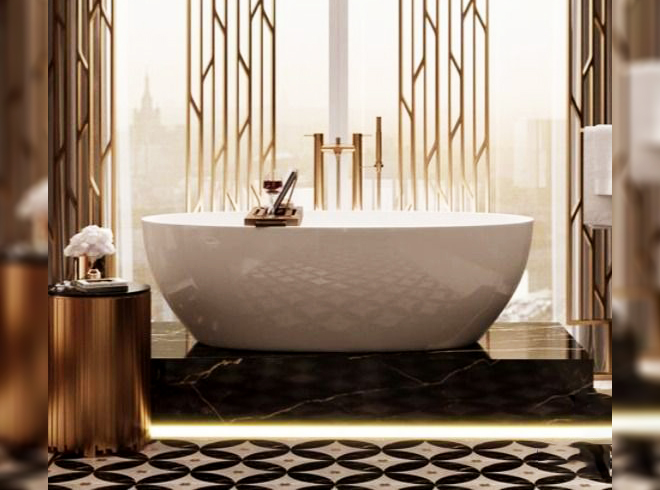
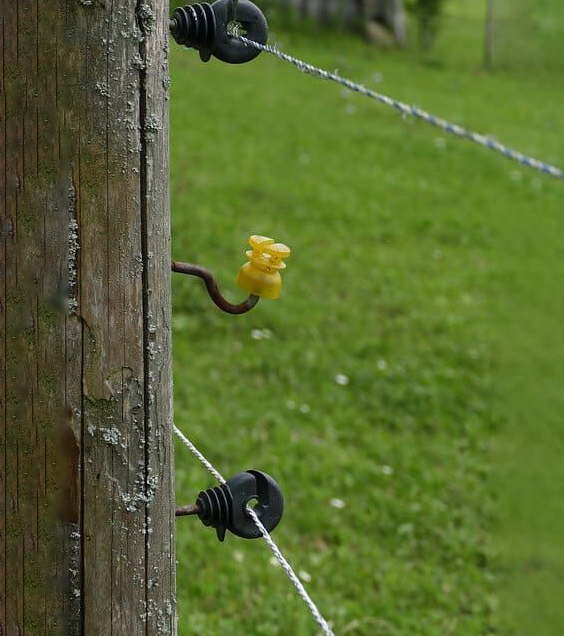
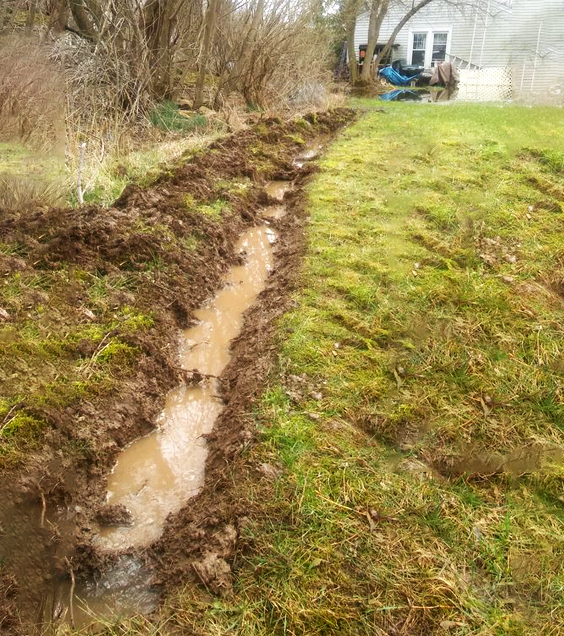
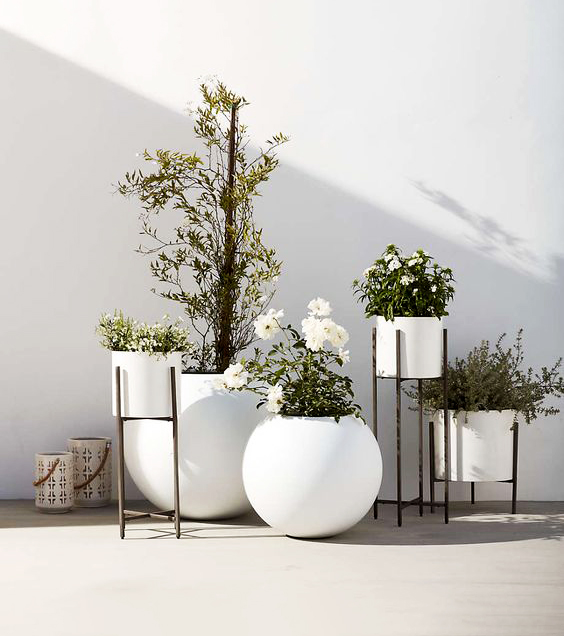
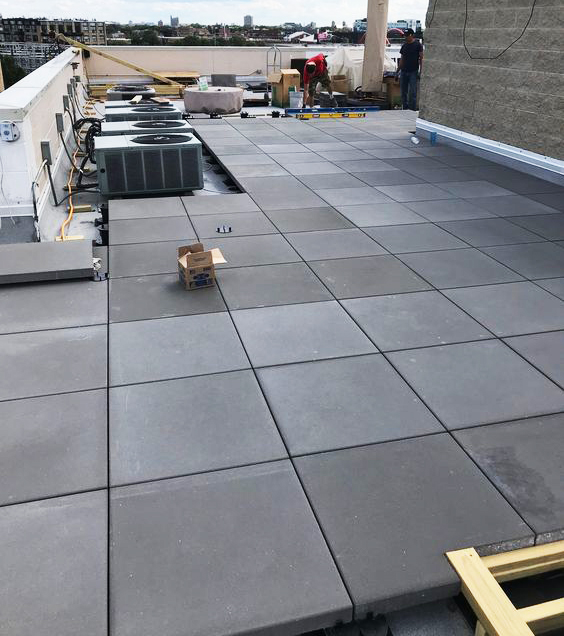
Comment
leave comment